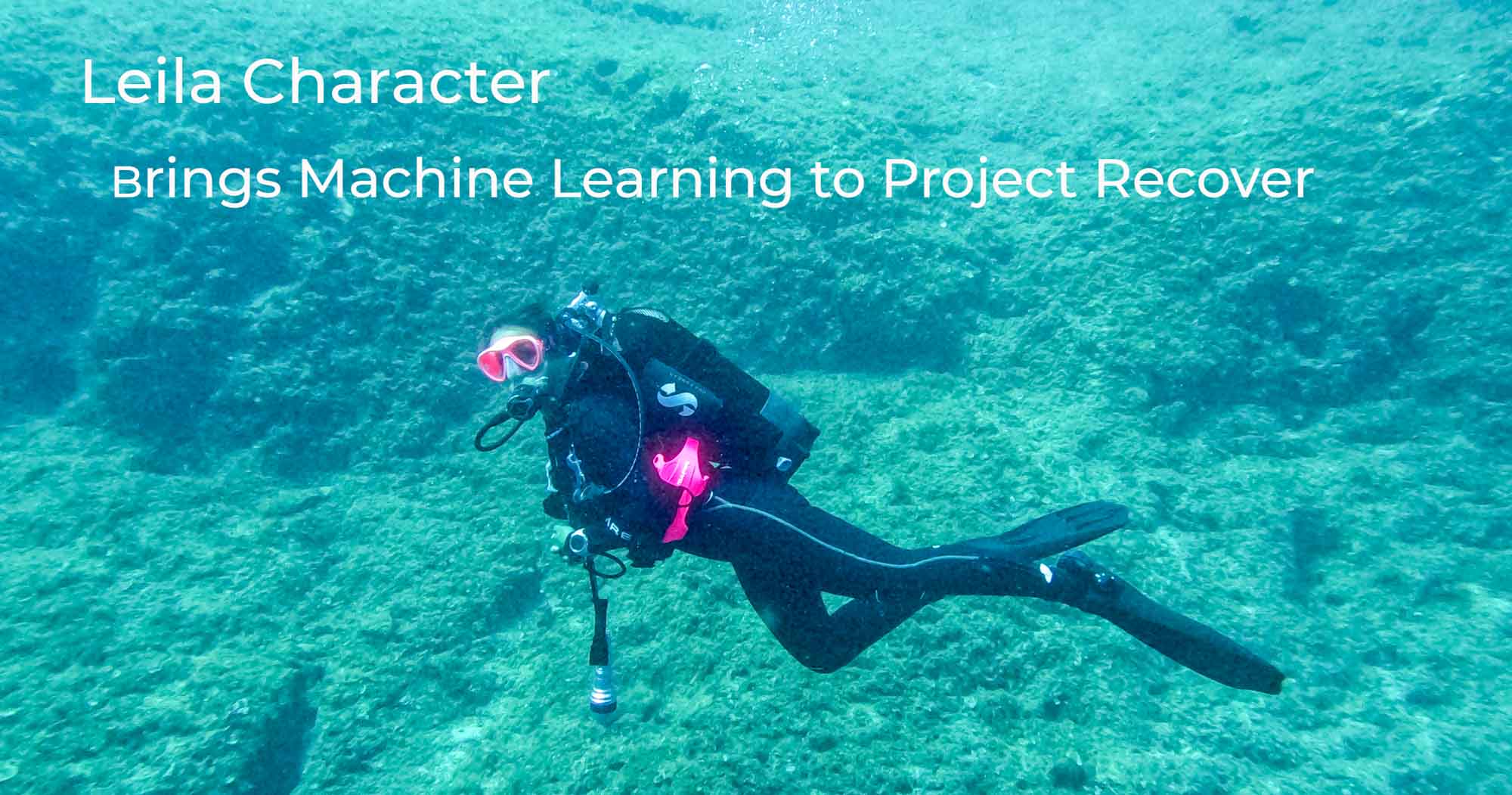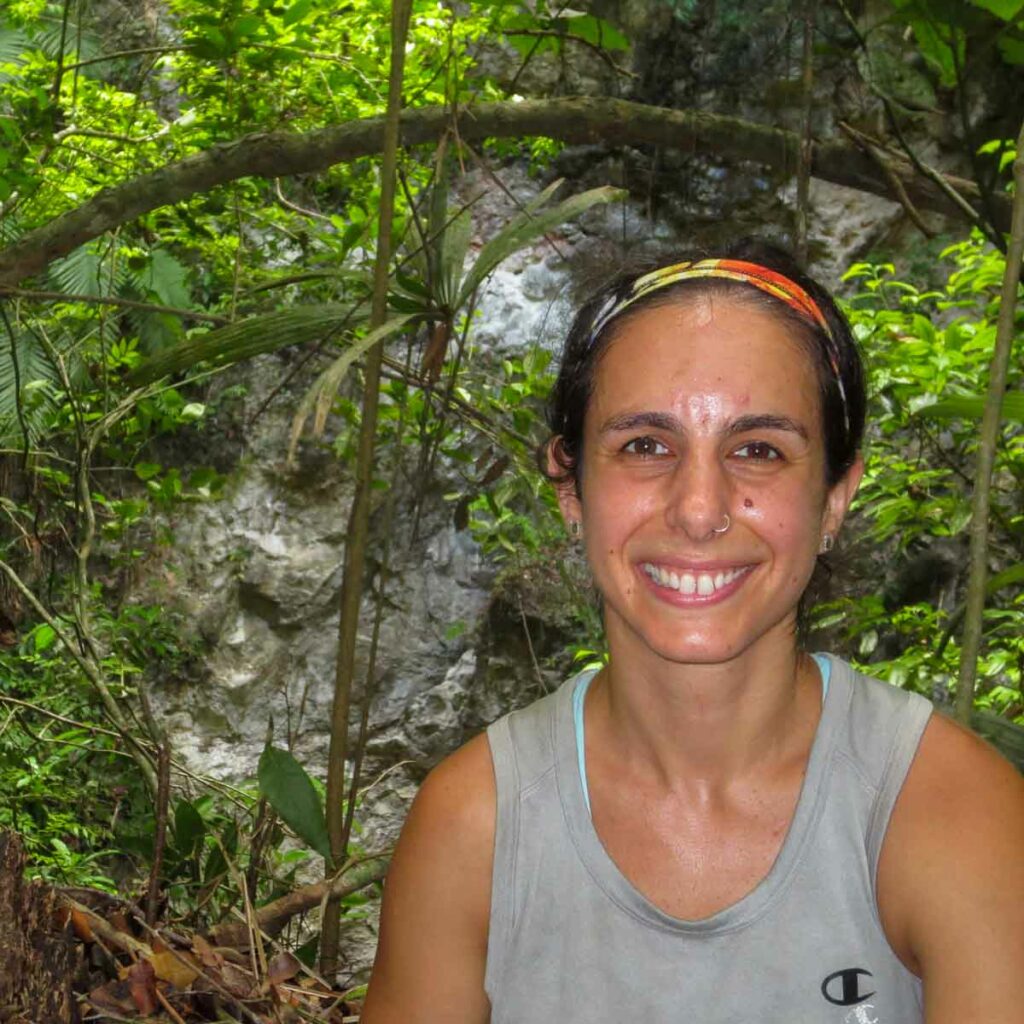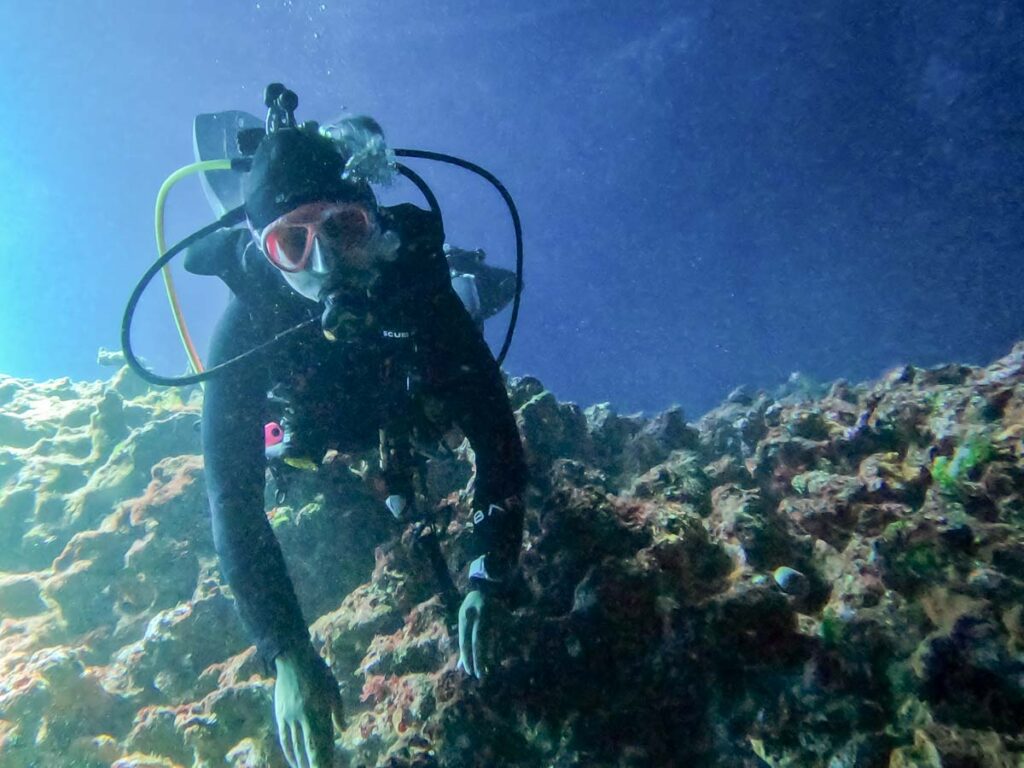

We are honored to announce Leila Character, Ph.D., is bringing Machine Learning to Project Recover to help bring more MIAs home. Leila is a Postdoctoral Researcher. She works with Dr. Mark Moline, Project Recover co-founder and Director of the University of Delaware’s School of Marine Science & Policy.
Leila specializes in machine learning. She will use her expertise to help Project Recover efficiently analyze data gathered by Autonomous Underwater Vehicles (AUVs) in search of underwater crash sites associated with Americans who are missing in action.
“When I started my graduate work, I wanted to stay grounded in reality and help people find solutions to real-world problems. My work here has the potential to help bring MIAs home and answer long-unanswered questions for their families. I find that extremely compelling.”
Machine Learning Helps Locate B-24s in the Adriatic Sea
Dr. Character recently participated in a Project Recover mission in the Adriatic Sea which resulted in locating and surveying five B-24s from World War II. The B-24s are associated with at least 23 MIAs. Dr. Mark Moline, Project Recover Co-Founder and Harrington Professor of Marine Studies at the University of Delaware’s School of Marine Science and Policy, led the mission.
The search for the missing aircraft in Croatia is part of a larger innovation effort sponsored by the Defense POW/MIA Accounting Agency (DPAA) to develop new technologies and approaches to locating potential wreck sites.
Dr. Character will apply new machine-learning algorithms to interpret large data sets collected by AUVs. Autonomous Underwater Vehicles (AUVs) collect massive amounts of sonar data that researchers must analyze to locate remnants of an aircraft. Dr. Character’s work will help free the team to focus on targets of interest.
“The aircraft that we are looking for are rarely intact, which requires more than just our human vision to interpret,” said Leila Character, a postdoctoral fellow working with Moline at UD.





Shaving Hours off Data Analysis
“A well-trained computer model can reduce time analyzing AUV-collected data by 90%,” Leila said. “What used to take 5 hours will take 45 minutes or less.”
While Project Recover search missions vary in length, the size of the area covered, and the number of AUVs used, one fact remains constant.
For every hour an AUV searches, the team spends another hour reviewing the data.
This is problematic.
If the team programs an AUV to search for seven hours, they will need to spend another seven hours analyzing the data.
Double that if there are two AUVs.
Data analysis is labor intensive. Clues pointing to crash sites are challenging to spot.
Long days on the water are followed by long nights analyzing data.
“The last thing we want is to go over the actual site and not see it because we missed the image in a sea of data.” (Mark Moline).
When Leila finishes the model, the computer will be able to analyze five hours of an AUV’s collected data within 45 minutes, effectively reducing time spent on data analysis by 90%.
While her post-doc is two years, Leila expects to have a working model within six months. After that, her work will continue to refine and make it increasingly robust and efficient.
Using Machine Learning to Find MIA Crash Sites
Leila will ‘train’ the computer to help Project Recover find MIA crash sites. The first goal is to get the computer to recognize and distinguish between regular underwater features and clues consistent with crash sites. The second is for the computer to begin identifying what patterns represent clues to a crash site on its own.
Leila will feed the computer thousands of images collected by Autonomous Underwater Vehicles (AUVs) from previous missions. The more images the computer has to learn, the more robust and successful the program will be.
In this case, Project Recover has thousands of images, not millions. There is a workaround. Leila will write code so the computer can make three or four ‘synthetic’ images out of one.
After analyzing millions of images, the computer will determine what patterns are important on its own.
Education: Machine Learning to Find Archaeological Features
Leila earned her master’s and doctoral degrees from the Department of Geography and Environment at the University of Texas. She is one of a handful of people using machine learning to help identify and find archaeological features. The idea to do so came to her when she was deep in the jungles of Guatemala.
Leila was searching for hard-to-find caves at ancient Maya archaeological sites in northwestern Belize for her master’s degree.
Over and over, she and the team trekked 10-12 miles through the jungles.
Over and over, they returned hot, sweaty, exhausted, and without success.





After multiple unsuccessful treks, Leila turned to her supervisor and asked a life-changing question.
“Do you think a computer would have an easier time finding the cave than we are?”
It was a question that changed the course of her life.
Leila finished her master’s degree and devoted her doctorate to researching and applying machine learning to finding archaeological features. She used machine learning – or deep learning to find and map:
- shipwrecks around the coast of the United States in partnership with the US Navy
- Maya architecture in Guatemala, Mexico, and Belize in full-canopy, hard-to-access areas, and
- cave entrances in ancient Maya archaeological sites that had previously been so hard to find.
GIS & Geology Background
When Leila wondered aloud about computers helping her find caves in Guatemala, she had a few valuable skills and life lessons under her belt.
Leila was comfortable with GIS, QGIS, and ArcGIS. She was also familiar with Python, a programming language.
She also has two principles that guide her.
When Leila graduated from high school, she knew she wanted to work outside but had little clarity about her future goals. As a result, she got a geology degree to work outdoors.



Still, Leila spent the first three years after college learning much about what she did not like. The experience became the foundation of two guiding principles:
- Don’t get stuck. (If you find yourself doing something you don’t like, leave before you get stuck.).
- Follow what excites you.
When she returned to graduate school at the University of Texas, she was following a passion. Initially, she focused on environmental history in the Maya area, working at Maya archaeological sites and using lidar for some analyses. Then she charted her course to use machine learning to find archaeological features.
“There are fewer than ten dedicated professionals in the field, and there is high demand,” Leia said.
Ambiguous Loss
Leila understands the impact of ambiguous loss. Her great-aunt disappeared without explanation in the 1950s. Loss without closure or understanding lingers and is generational. It leaves so many unanswered questions. It is difficult to get emotional closure.
Leila is honored to use her expertise to help bring our Nation’s MIAs home and closure to their families.



Really interesting. Fantastic, in fact!
Fascinating! We know “MIA” equates to those military members lost during combat, but DPAA doesn’t have jurisdiction over “ops loss personnel” (OLP), those military members lost at sea during peacetime or non-combat support missions. Hopefully, Dr. Character’s work to streamline the analysis of sonar survey data will also benefit those searching for the OLPs lost at sea (e.g., B-52F 70173 lost over the Gulf of Mexico on 28 Feb 68 with eight souls on board). Cheers!
Thank you for the comments.
Please send any additional information on the B-52 lost to info@ProjectRecover.org
DPAA rules may be changing.